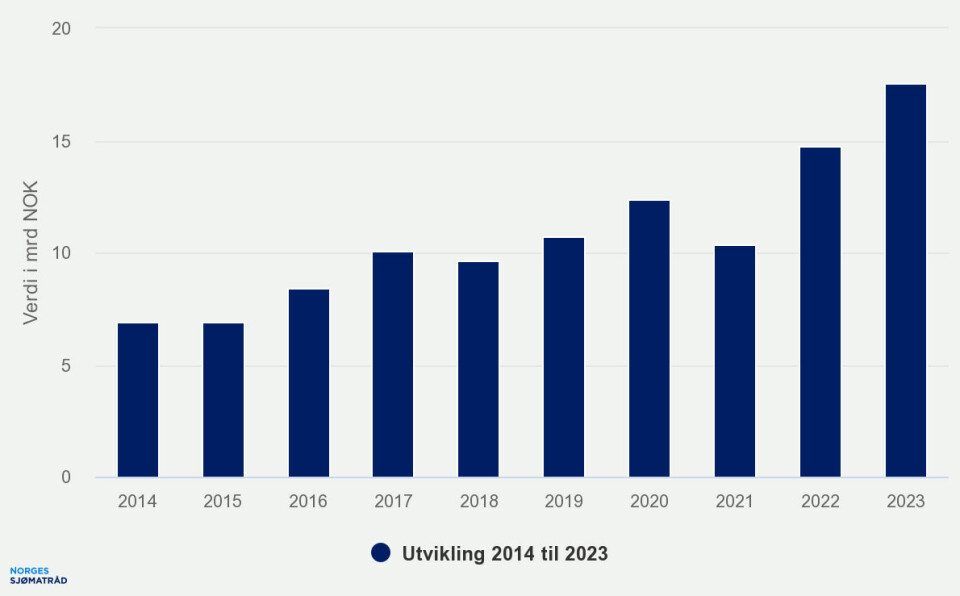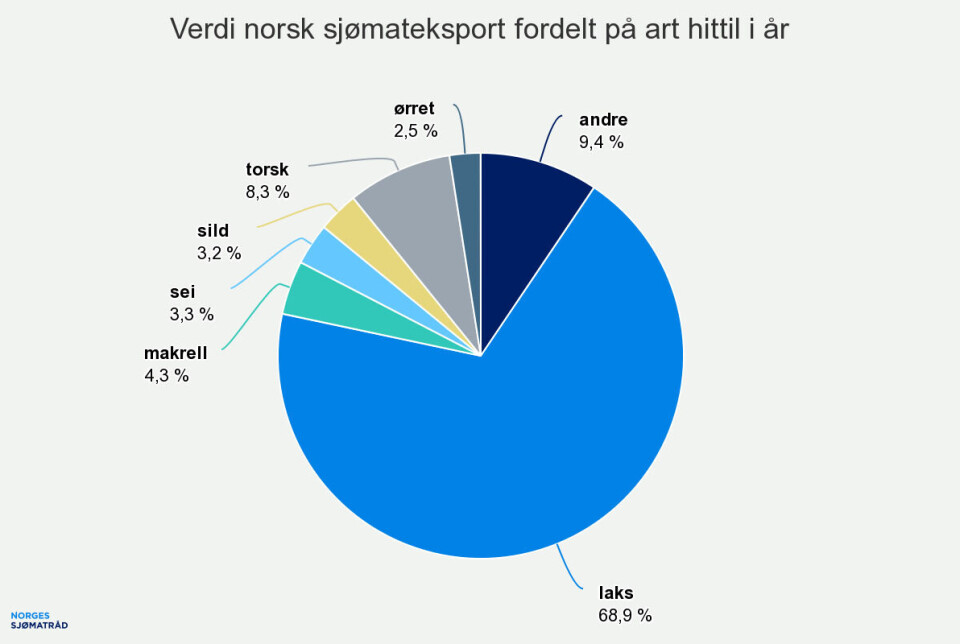
Norway’s salmon exports were worth £96m last month
Weak kroner helps value figure increase by 15% year on year despite 8% drop in volume
The value of salmon exported from Norway last month increased by 15% to NOK 1.2 billion (£96.2 million) compared to February 2022, despite export volume falling by 8%.
Norway, the world’s biggest producer of farmed salmon, exported 81,645 tonnes of salmon to a value of NOK 8.8 billion in February, the Norwegian Seafood Council said in its monthly export update.
The decline in salmon export volume was primarily due to lower harvest volumes.
The United States, Poland – where a significant amount of secondary processing takes place - and France were the biggest markets.

Farmed salmon exports to the US in February increased in value by NOK 432 m, or 77%, compared to the same month last year.
Strong dollar
Norwegian producers sent 6,604 tonnes to the US last month, which is 41% higher than the same month last year.
“The good development in the US is the result of several factors,” said Norwegian Seafood Council analyst Paul Aandahl. “Demand growth in combination with a strong currency are the most important drivers. In addition, there has been a weak development over time in salmon production in other supplier nations.”
China was the second largest growth market after the US in February.
“China has put the Covid pandemic behind it, and there is a strong demand for fresh salmon. There is, therefore, an exciting development in the market,” said Andreas Thorud, the Norwegian Seafood Council's envoy to China.
Fewer fish to Japan
Salmon exports to Japan declined by 15% in February.
“An important explanation is a strong increase in shipping costs because of closed Russian airspace. That applies in February and the last 12 months,” said Aandahl.
There was a record-high price for fresh salmon fillets of NOK 148 per kg in February. This was NOK 9 per kg higher than the previous record month, which was in January 2023.
There was also a record high price for fresh whole salmon at NOK 102 per kg. This was NOK 4 per kg higher than the previous record month, May 2022.
Trout
February saw a large fall in volume and small fall in value of farmed trout from Norway. Trout producers exported 2,946 tonnes of fish worth NOK 325 m, a fall in value of NOK 3 m, or 1%, compared to February last year. The volume fell by 26%.
The US, Thailand and Japan were the biggest markets for trout, while Lithuania had the largest increase in value in February, with an increase in export value of NOK 28 m compared to the same month last year. The export volume to Lithuania was 300 tonnes.
There was a record high price for fresh whole trout of NOK 106 per kg. This was NOK 4 higher than the previous record month, which was in May 2022.
Overall, Norway exported NOK 12.8 bn worth of farmed and wild caught seafood in February, an increase of NOK 1.6 bn, or 14%, from the same month last year despite the export volume being 207,000 tonnes (17%) lower.
High price growth
“Despite war and unrest in the world, Norwegian seafood exports have had a good start to the year in terms of value, driven by high price growth and a weak Norwegian krone. However, the volume has fallen six months in a row, and we have to go all the way back to 2006 to find a month of February with a lower export volume of Norwegian seafood,” said Norwegian Seafood Council chief executive Christian Chramer.
Along with lower salmon harvests, lower quotas and bad weather had contributed to landings of some wild caught species such as cod being significantly lower than in the same period last year.
“When the export value nevertheless increases in February, it is due, among other things, to the sharp increase in prices. We live in a troubled time where the war in Ukraine, global shortage of raw materials and a number of increased costs continue to push prices up,” said Chramer.
“A weak Norwegian krone is an important driver behind the increase in value. While the export value measured in Norwegian kroner increased by 14%, the value measured in euros increased by only 4%. Measured in US dollars, the export value fell by 1% from February last year.”






















































